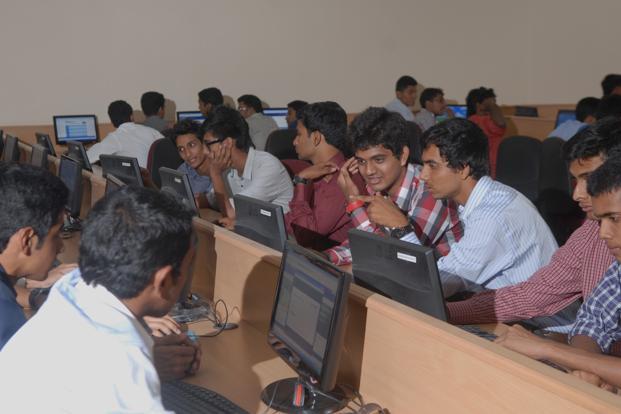
New Delhi: The growth of technical education in India since Independence has been phenomenal as the number of engineering seats increased from 3,200 seats in 1947 to 1.9 million in 2014-15.
But now, for the first time since 2006, its growth has taken a correction in the face of poor employability of engineering graduates and sluggish job creation.
The total intake of engineering colleges in India has fallen to 1.84 million in 2015-16 from 1.9 million in 2014-15, an all-time high, according to data compiled by technical education regulator All India Council for Technical Education (AICTE).
“The growth of technical education in the country before Independence was very slow. The number of engineering colleges and polytechnics (including pharmacy and architecture institutions) in 1947 was 44 and 43, with an intake capacity of 3,200 and 3,400, respectively,” according to the regulator’s website.
Policy initiatives through five-year plans and participation of private and voluntary organisations in setting up technical institutions on a self-financing basis has also helped the growth in number of engineering seats, says the regulator.
But in recent times poor quality of education and lack of job creation have given rise to the debate over whether there is a glut of engineers, which led the AICTE to ease the process for closure of technical colleges in the country, Mintreported on 27 January.
“There is over supply and this needs to be streamlined by easing the closure of ailing institutions and departments in sectors such as engineering and management,” said a government official who declined to be named.
“The dip in number is a good indicator and suggests that the professional education space is becoming rational,” the official said.
India has nearly 3,500 engineering colleges and the technical education regulator is making a fresh count; the figures are likely to be released soon. AICTE chairman Anil Sahasrabudhe did not respond to calls or a text message seeking his response.
Harivansh Chaturvedi, alternate president of education promotion society of India, an association of professional education providers, said that institutions are slowly realising that unless they become competitive and industry worthy, it will be tough to attract students or survive.
“Employability is a key challenge for all education stake holders: institutions, industry and authorities. You may see the number going down further in coming years,” said Chaturvedi, who is also the director of Birla Institute of Management and Technology (BIMTECH) in Greater Noida.
S.S. Mantha, a ex-chairman of the AICTE, said quality is an issue in the technical education space in India.
“There are three categories: very good, above average and below average institutes and students taking admission there. The question is can we as a country shut down these lower-rung institutions, that too while the talking about access and equity,” Mantha said.
“The other question is everyone beats up the supply side but what about the demand side: do we have five million jobs a year for five million youth who are graduating annually? If you flip the employability vs job debate, you will realize that job creation is much lower than what it should be in last several years,” he added.
Low capacity utilisation in labour-intensive manufacturing sector and fall in exports have to led to sluggish job creation in the economy.
Job creation fell by a net 43,000 in three months ended 30 June 2015 from the previous quarter, according to the 26th quarterly employment survey conducted by the labour ministry. The net fall in jobs created was the lowest since April-June 2009 (131,000) when global economic crisis was at a high, said the employment data. India’s merchandise exports too contracted for the 13th consecutive month in December, according to the latest commerce ministry data released in January.
[“source-Livemint”]




